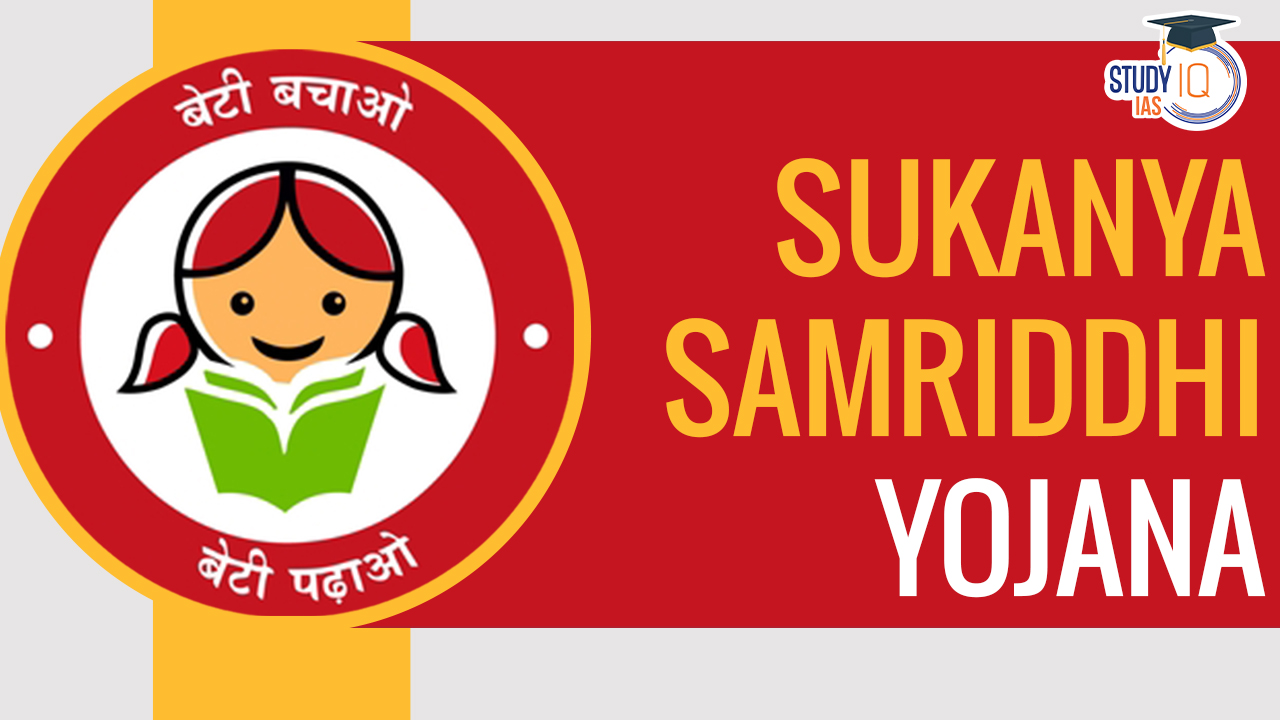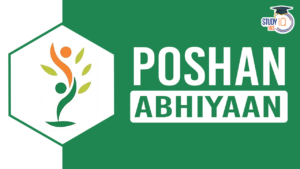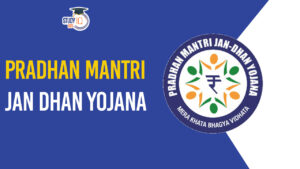Table of Contents
The Government of India has introduced the Sukanya Samriddhi Yojana (SSY) to help parents secure the financial future of their daughters with small but regular savings.
Under this scheme, if you invest just ₹250 or ₹500 per month, your daughter can receive up to ₹74 lakhs by the time she turns 21. Launched in 2015 as a part of the ‘Beti Bachao, Beti Padhao’ campaign, the Sukanya Samriddhi Yojana continues to be one of the most rewarding and secure savings schemes in India.
Sukanya Samriddhi Yojana (SSY) Scheme
The Sukanya Samriddhi Yojana (SSY) stands as a specialized deposit scheme exclusively designed for the financial well-being of girl children, introduced by the Ministry of Finance. Launched on January 22, 2015, by the Hon’ble Prime Minister as part of the Beti Bachao Beti Padhao campaign, this initiative is geared towards addressing the educational and marriage expenses for girl children.
Notified by the Government of India on December 14, 2014, the SSY serves as a compelling encouragement for parents to proactively create a financial reserve for their daughters’ future needs. Applications for SSY can be submitted through Post Offices or the branches of Public Sector Banks, including HDFC Bank, Axis Bank, and ICICI Bank.
| Aspect | Details |
| Scheme Name | Sukanya Samriddhi Yojana (SSY) |
| Launch Date | January 22, 2015 |
| Initiator | Hon’ble Prime Minister, as part of Beti Bachao Beti Padhao |
| Objective | Education and marriage expenses for girl child |
| Applicable Institutions | Post Offices, Public Sector Banks, Private Sector Banks |
| Account Holder | Parent or legal guardian |
| Age Limit for Girl Child | Below 10 years |
| Number of Accounts Allowed | One account per girl child; a Maximum of two per family |
| Minimum Investment | ₹250 per annum |
| Maximum Investment | ₹1,50,000 per annum |
| Maturity Period | 21 years |
| Interest Rate (01.04.2023 to 30.06.2023) | 8.0% |
| Tax Benefits | Principal amount and interest exempt from taxation; Deductible under section 80C up to ₹1,50,000 |
| Success Metrics | Around 2.73 crore accounts opened; Nearly ₹1.19 Lakh Crore deposits |
What is Sukanya Samriddhi Yojana (SSY)?
Sukanya Samriddhi Yojana is a long-term, government-backed savings scheme aimed exclusively at the parents or guardians of girl children. The scheme encourages systematic savings for a girl’s future education, wedding, and overall well-being.
With an attractive interest rate of 8.2% per annum, the scheme offers tax-free returns and ensures financial support when your daughter needs it the most.
How ₹250 or ₹500 Monthly Can Turn Into ₹74 Lakhs
If a parent invests ₹1.5 lakh annually (₹12,500/month) for 15 years under SSY, the total principal would be ₹22.5 lakhs. At an interest rate of 8.2%, this amount can grow up to ₹74+ lakhs by the time the girl turns 21.
Illustrative Example:
| Monthly Contribution | Total Investment (15 years) | Approx. Maturity Amount |
|---|---|---|
| ₹250/month | ₹45,000 | ₹1.5+ lakh |
| ₹500/month | ₹90,000 | ₹3+ lakhs |
| ₹12,500/month | ₹22.5 lakhs | ₹74+ lakhs |
Features of Sukanya Samriddhi Yojana
Key Features of Sukanya Samriddhi Yojana:
- Account Holder: The account can be opened by a parent or legal guardian for a girl child below the age of 10 years.
- Account Limit: Only one account is allowed per girl child, and a family can open a maximum of two SSY accounts.
- Investment Range: The minimum investment is ₹250 per annum, while the maximum investment is capped at ₹1,50,000 per annum.
- Maturity Period: The scheme has a maturity period of 21 years.
- Interest Rate (as of 01.04.2023 to 30.06.2023): The Rate of Interest is 8.0%.
- Tax Benefits: Both the principal amount deposited and the interest earned throughout the tenure, along with maturity benefits, are exempt from taxation. The principal amount is deductible under section 80C up to ₹1,50,000.
As of now, the scheme has witnessed remarkable success, with approximately 2.73 crore accounts opened and nearly ₹1.19 Lakh Crore deposited since its inception. The Sukanya Samriddhi Yojana continues to play a pivotal role in fostering financial security and empowerment for girl children across the nation.
Eligibility Criteria for Sukanya Samriddhi Yojana
- The account can be initiated by a guardian in the name of a girl child who is below the age of ten at the time of opening the account.
- Each account holder is allowed to have only one account under the Sukanya Samriddhi Yojana Scheme.
- A maximum of two Sukanya Samriddhi Yojana accounts can be opened in one family. An exception is made for families with twins or triplets born in the first or second order of birth. In such cases, more than two accounts may be opened, supported by an affidavit from the guardian and birth certificates of the twins/triplets. However, this provision does not apply if the first order of birth results in two or more surviving girl children.
Application Process for Sukanya Samriddhi Yojana
Offline Method
- Visit the chosen bank or Post Office branch for Sukanya Samriddhi Yojana account opening.
- Complete the application form with the required details and attach supporting documents.
- Make the initial deposit in cash, check, or demand draft, with the deposit amount ranging between Rs. 250 and Rs. 1.5 lakh.
- The bank or the Post Office will process your application and payment.
- Upon completion of processing, your Sukanya Samriddhi Yojana account will be activated, and a passbook will be provided to mark the account’s opening.
Documents Required for Sukanya Samriddhi Yojana
- Birth certificate of the girl child.
- Photo ID of the parent or legal guardian initiating the account.
- Address proof of the parent or legal guardian.
- Other KYC proofs, such as PAN card and Voter ID.
- Sukanya Samriddhi Yojana account opening form.
- In the case of multiple children born under one order of birth, a medical certificate must be submitted.
- Any additional documents requested by the bank or the Post Office.
Benefits of Sukanya Samriddhi Yojana
- Affordable Investment:
-
- Minimum Investment: ₹250 per annum
- Maximum Investment: ₹1,50,000 per annum
- Long-term Maturity:
-
- Maturity Period: 21 years
- Competitive Interest Rates:
-
- Interest Rate (01.04.2023 to 30.06.2023): 8.0%
- SSY boasts the highest interest rate among all Small Savings Schemes, making it an attractive investment option.
- Tax Benefits:
-
- Tax-Exempt Status: The principal amount deposited, interest earned throughout the tenure, and maturity benefits fall under the tax-exempt category according to Section 80C.
- Flexible Transfer Option:
-
- The account can be seamlessly transferred anywhere in India, providing flexibility to the account holder who may relocate.
- Post-Maturity Interest Payment:
-
- Even after maturity, if the account is not closed, interest continues to accrue, ensuring sustained financial growth.
- Premature Withdrawal:
-
- A unique feature allows for a premature withdrawal of up to 50% of the investment after the child reaches the age of 18. This withdrawal is permitted even if the account holder is not getting married, providing financial flexibility for various needs.
Sukanya Samriddhi Yojana UPSC
The Sukanya Samriddhi Yojana (SSY) is a government initiative, launched as part of the ‘Beti Bachao Beti Padhao’ campaign, aimed at securing the financial future of girl children. Introduced in 2015, the scheme offers an attractive interest rate, tax benefits, and encourages affordable investments with a minimum of ₹250 annually. With a 21-year maturity period, SSY has witnessed significant success, with around 2.73 crore accounts opened and nearly ₹1.19 Lakh Crore deposited. The scheme promotes gender equality and financial empowerment.


 Employment Linked Scheme (ELS), Objectiv...
Employment Linked Scheme (ELS), Objectiv...
 Poshan Abhiyaan, POSHAN 2.0, Features an...
Poshan Abhiyaan, POSHAN 2.0, Features an...
 10 years of PM Jan Dhan Yojana, Objectiv...
10 years of PM Jan Dhan Yojana, Objectiv...





















